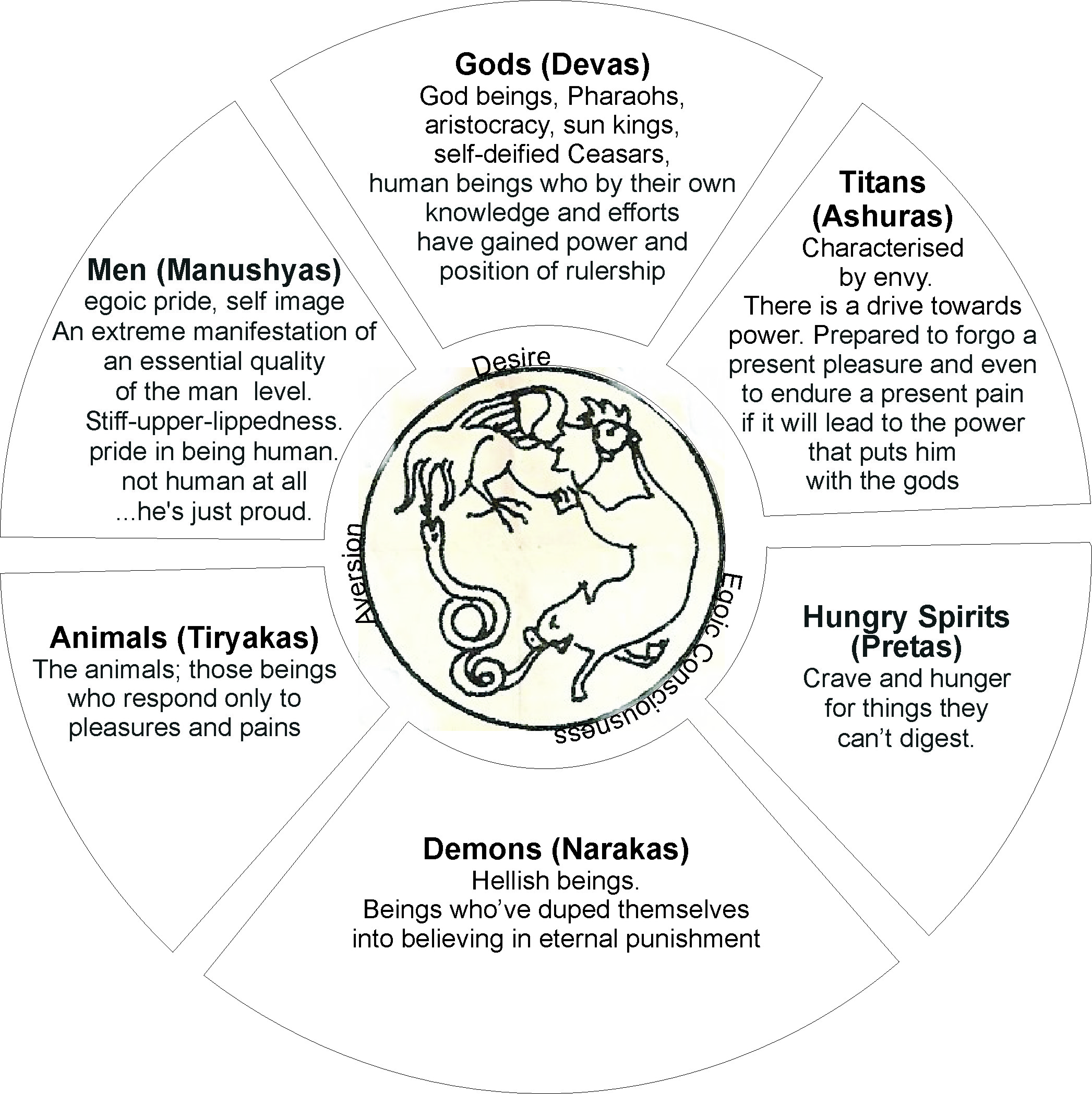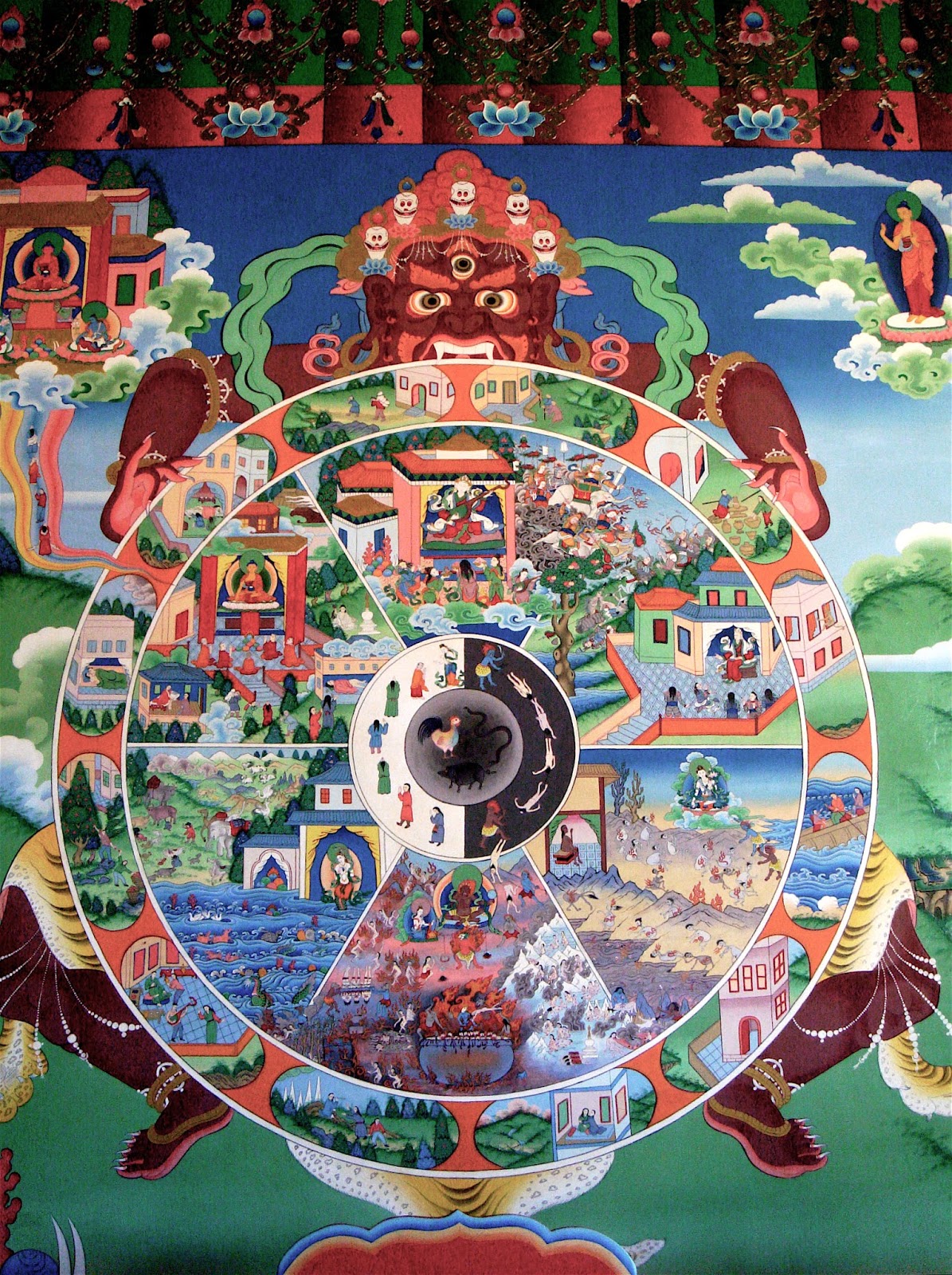
From these three poisons, the whole cycle of existence evolves. These three animals represent the three poisons, which are the core of the bhavacakra. The particular bird used in this diagram represents an Indian bird that is very attached to its partner. The bird represents attachment (also translated as desire or clinging). The snake represents aversion or anger this is because it will be aroused and strike at the slightest touch. The pig stands for ignorance this comparison is based on the Indian concept of a pig being the most foolish of animals, since it sleeps in the dirtiest places and eats whatever comes to its mouth. They represent the three poisons of ignorance, aversion, and attachment, respectively. In the hub of the wheel are three animals: a pig, a snake, and a bird. The Buddha is pointing to the moon, indicating that liberation from samsara is possible. The moon above the wheel indicates liberation. The fierce being holding the wheel represents impermanence this symbolizes that the entire process of samsara or cyclic existence is impermanent, transient, constantly changing. The fourth and outer layer of the wheel symbolizes the twelve links of dependent origination these links indicate how the sources of suffering that the three poisons and karma produce live within cyclic existence. Karma in turn gives rise to the six realms, which represent the different types of suffering within samsara. Symbolically, the three inner circles, moving from the center outward, show that the three poisons of ignorance, attachment, and aversion give rise to positive and negative actions these actions and their results are called karma. The Buddha pointing to the white circle indicates that liberation is possible.


In Buddhism, bhava denotes the continuity of becoming (reincarnating) in one of the realms of existence, in the samsaric context of rebirth, life and the maturation arising therefrom.

It is used in Indian Buddhism and Tibetan Buddhism.īhavachakra, "wheel of life," consists of the words bhava and cakra.īhava ( भव) means "being, worldly existence, becoming, birth, being, production, origin". It is found on the outside walls of Tibetan Buddhist temples and monasteries in the Indo-Tibetan region, to help non Buddhists understand Buddhist teachings.

The bhavacakra ( Sanskrit: भवचक्र Pāli: bhavacakka Tibetan: སྲིད་པའི་འཁོར་ལོ, Wylie: srid pa'i 'khor lo) is a symbolic representation of saṃsāra (or cyclic existence).


 0 kommentar(er)
0 kommentar(er)
